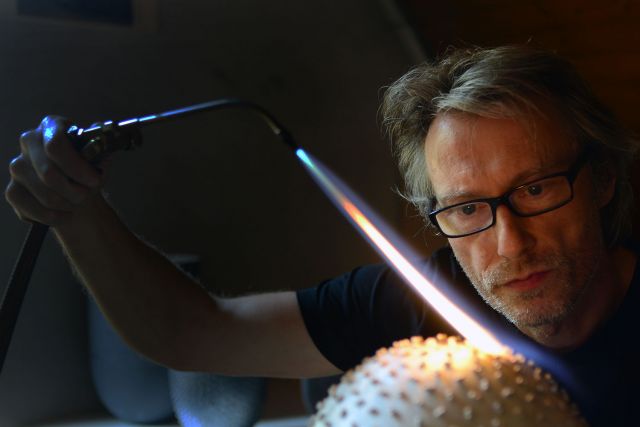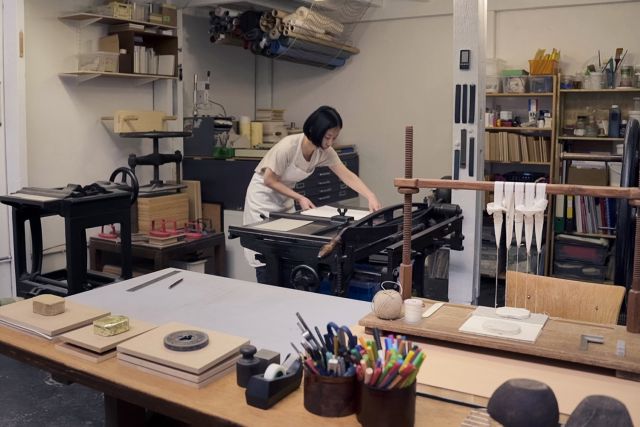This vase made from a Dalmatian jasper stone acts like a rocky landscape for flowers. It is a composition of the rough shape of the stone, cylinders extracted from that stone and the holes left behind by the extracted cylinders. The stone has a light grey shade with black dots.
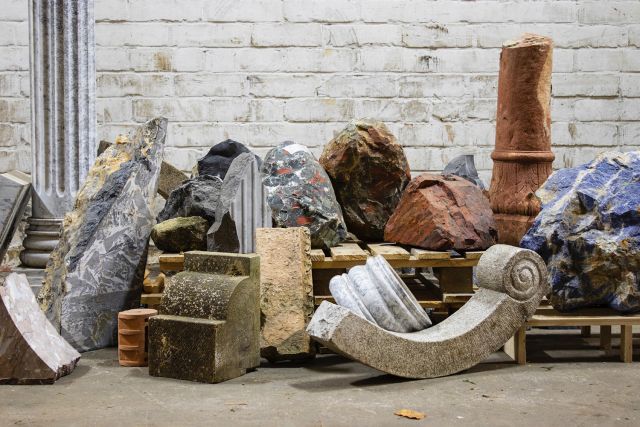
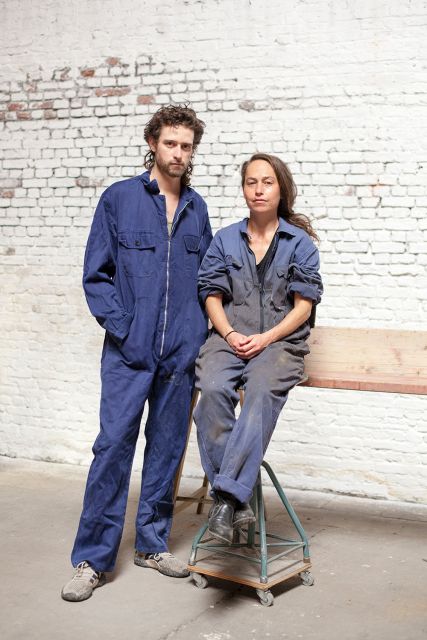
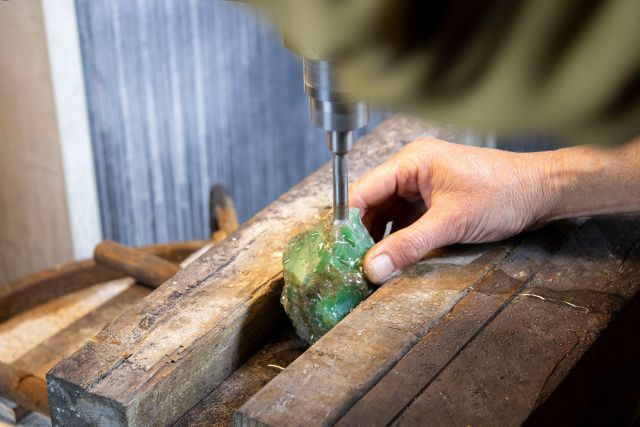
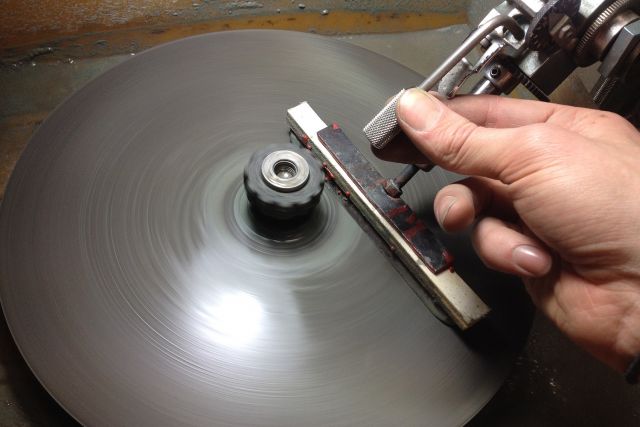
Dana Seachuga & Octave Vandeweghe
- Studio DO
- Lapidarist
- Antwerp, Belgium
- Rising Star
By appointment only
+32 485595831
Cutting-edge collaboration
- • Dana grew up in Israel, Octave in Belgium
- • They work at a former factory in Antwerp
- • They like to develop their own techniques
Both Dana Seachuga and Octave Vandeweghe were educated in jewellery design and stone cutting. They studied in their countries of origin, respectively Israel and Belgium, but both also gained experience in Germany. Their workshop is located at a former mustard factory in Antwerp. “I started to make gemstone works with self-made machines assembled from scrap, broken machines and DIY tools,” says Octave. “I then joined his atelier, bringing along a few old-fashioned stone cutting machines,” adds Dana. At first, Dana and Octave focused on their individual works and only took on a few commissions together. “While collaborating, we discovered common interests in the craft,” they explain. And thus was born Studio DO. The name refers to their initials, the act of doing and the acronym for ‘domestic objects’.
Read the full interviewWorks
Photo: ©Studio DO

Photo: ©Studio DO
The dark brown – but transparent – carafe is made by drilling a hole in a smoky quartz crystal. The leftover material, a cylinder, was attached to the crystal and functions as a handle. The frosted crystal shot glasses are similarly extracted from a rock crystal, and can be placed back into it.

Photo: ©Studio DO
Here is a smoky rutilated quartz necklace with brass links and two cylindrical beads that were extracted from the rock. The quartz has a translucent brown colour. The golden coloured links resemble the crystals in the rock.

Photo: ©Studio DO
Two half-cylinders extracted from a striped green jasper rock are assembled on silver rings. The rings, shaped like baguettes, are placed back in the rock.

Photo: ©Studio DO
Here is a sodalite stone, known for its rich royal blue. It is a reinterpretation of the historical Delft tulip vase. The design showcases how theatrical and natural a vase can be.





